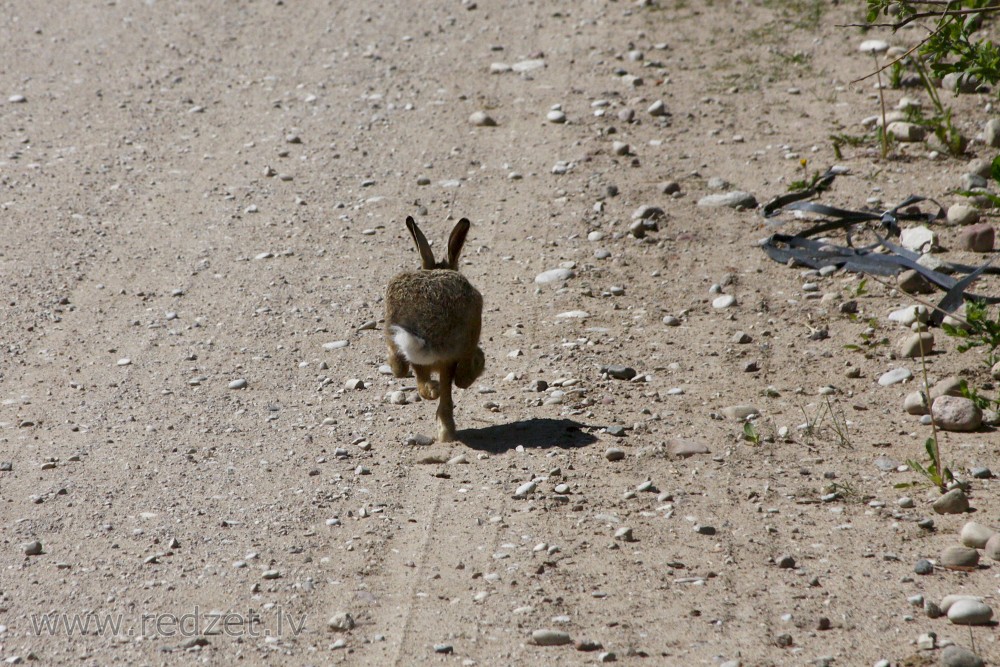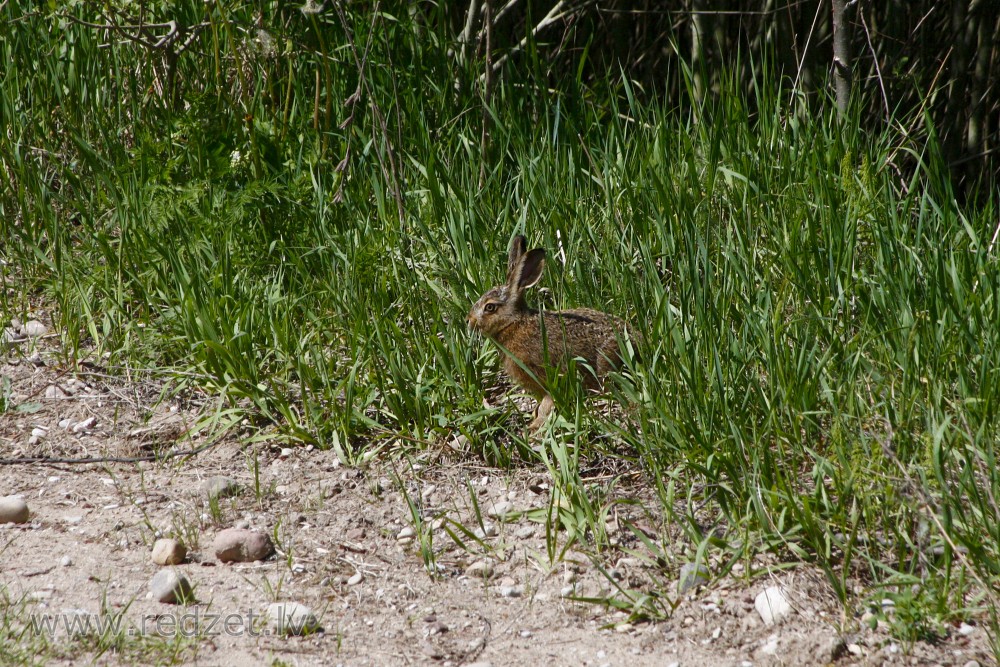European hare (Lepus europaeus)
The European hare (Lepus europaeus), also known as the brown hare, is a species of hare native to Europe and parts of Asia. It is among the largest hare species and is adapted to temperate, open country. Hares are herbivorous and feed mainly on grasses and herbs, supplementing these with twigs, buds, bark and field crops, particularly in winter. Their natural predators include large birds of prey, canids and felids. They rely on high-speed endurance running to escape predation, having long, powerful limbs and large nostrils.
Generally nocturnal and shy in nature, hares change their behaviour in the spring, when they can be seen in broad daylight chasing one another around in fields. During this spring frenzy, they sometimes strike one another with their paws ("boxing"). This is usually not competition between males, but a female hitting a male, either to show she is not yet ready to mate or as a test of his determination. The female nests in a depression on the surface of the ground rather than in a burrow, and the young are active as soon as they are born. Litters may consist of three or four young and a female can bear three litters a year, with hares living for up to twelve years. The breeding season lasts from January to August.
The European hare is listed as being of least concern by the International Union for Conservation of Nature because it has a wide range and is moderately abundant. However, populations have been declining in mainland Europe since the 1960s, at least partly due to changes in farming practices. The hare has been hunted across Europe for centuries, with more than five million being shot each year; in Britain, it has traditionally been hunted by beagling and hare coursing, but these field sports are now illegal. The hare has been a traditional symbol of fertility and reproduction in some cultures, and its courtship behaviour in the spring inspired the English idiom mad as a March hare.
Description
The European hare, like other members of the family Leporidae, is a fast-running terrestrial mammal; it has eyes set high on the sides of its head, long ears and a flexible neck. Its teeth grow continuously, the first incisors being modified for gnawing while the second incisors are peg-like and non-functional. There is a gap (diastema) between the incisors and the cheek teeth, the latter being adapted for grinding coarse plant material. The dental formula is 2/1, 0/0, 3/2, 3/3. The dark limb musculature of hares is adapted for high-speed endurance running in open country. By contrast, cottontail rabbits are built for short bursts of speed in more vegetated habitats. Other adaptions for high speed running in hares include wider nostrils and larger hearts. In comparison to the European rabbit, the hare has a proportionally smaller stomach and caecum.
The fur colour is grizzled yellow-brown on the back; rufous on the shoulders, legs, neck and throat; white on the underside and black on the tail and ear tips. The fur on the back is typically longer and more curled than on the rest of the body. The European hare's fur does not turn completely white in the winter as is the case with some other members of the genus, although the sides of the head and base of the ears do develop white areas and the hip and rump region may gain some grey.
Behaviour and life history
Hares are primarily nocturnal and spend a third of their time foraging. During daytime, a hare hides in a depression in the ground called a "form" where it is partially hidden. Hares can run at 70 km/h (43 mph) and when confronted by predators they rely on outrunning them in the open. They are generally thought of as asocial but can be seen in both large and small groups. They do not appear to be territorial, living in shared home ranges of around 300 ha (740 acres). Hares communicate with each other by a variety of visual signals. To show interest they raise their ears, while lowering the ears warns others to keep away. When challenging a conspecific, a hare thumps its front feet; the hind feet are used to warn others of a predator. A hare squeals when hurt or scared and a female makes "guttural" calls to attract her young.Hares can live for as long as twelve years.
en.wikipedia.org
https://en.wikipedia.org/wiki/European_hare
Continue reading


